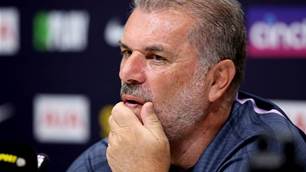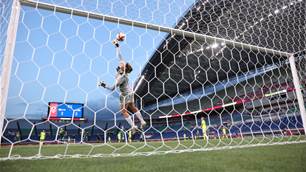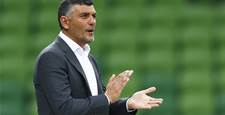For the Hyundai A-League, broadcasting and its deal with Foxtel is top of a long to-do list since the COVID-19 wrecking ball sent sport into a tailspin.
A quick recap: back in 2005, the Hyundai A-League’s new broadcast partner Fox Sports (on the Foxtel pay-TV platform) was pivotal in dragging the code into a new era.
Their product was first class, albeit production costs were exorbitant and the distribution model was of its time.
Sport and business continually evolve and 15 years later, the relationship between the league and the subscription TV provider is at a tipping point.
Costs and ROI are Foxtel’s main concerns.
Is 2020 the time for the A-League to consider a different type of broadcast solution?
Specifically, by owning its own product, the A-League could stream games direct to its consumers on a dedicated A-League channel for a monthly premium.
It’s understood the English Premier League crunched the numbers for its own OTT model - call it EPL TV for argument's sake.
They then used those huge projections of revenue to drive up a new highly lucrative broadcast deal. Otherwise, they could have gone OTT themselves in a similar way to NBA League Pass.
Could the A-League innovate by going on their own, delivering games via live stream direct to consumer? 
At the same, utilizing the exponential growth in broadcast technology, 5G, AI and cloud-based solutions to help provide cost-effective, scalable broadcasts of similar quality?
Bringing the cost of production down is key. For example, the NRL has a reputed cost of production at an unsustainable $125,000 per game.
There’s no shortage of OTT options out there as increasingly robust technology continues to offer streamlined options for broadcast at scale.
Grabyo is just one.
It’s OTT service is now live-streaming the increasingly popular K-League to the official Twitter and YouTube channel of the K-League, whose Australian rights were snapped up by Optus Sports today.
In fact, the K-League is also utilizing AI (Artificial Intelligence) to automate its best video content.
Through its partnership with WSC Sports, the K-League tap into WSC's proprietary AI platform to automatically create short-form videos in real-time that are easily shared across all digital platforms.
Similarly, DAZN, a major new player in the OTT sports arena globally, have been using AI to automate much of their partners’ video content production.
HEAR MORE ON THIS AND MUCH MORE IN THE FULL PODCAST

LISTEN TO THE FTBL PODCAST HERE NOW:
[CLICK HERE TO PLAY IF YOU ARE ON CHROME]
SUBSCRIBE ON ITUNES HERE
VP Strategy, Asia at DAZN Media Andy Jackson told FTBL on this week’s Year Zero podcast that the A-League should be exploring the idea of owning and monetising their own content (although he wasn’t able to comment on speculation DAZN was considering streaming A-League games live if they become available).
It’s a space that’s abuzz with possibilities.
Luke McCoy is CEO and co-founder of LIGR.live (Live Graphics Systems).
His company is already helping to power football at grassroots having partnered with a number of state football federations on their live NPL OTT broadcasts.
It’s been a game-changer for the NPLs.
An affordable product (one camera), streamed live providing a way to reach and grow their fanbase while determining themselves how to integrate sponsorship and standardised graphic elements into the broadcast.
“Many sports are not just looking at their top league content but how to vertically integrate all their content,” McCoy tells FTBL.
“With an OTT the difference is you can get it all at the same time on the same platform.
"You then drive audience and ad revenue. This new world model that these [traditional] organizations are starting to look at is because the broadcast rights have reached their limits.
“COVID-19 has kind of broken that now because they’re all saying, we can’t afford to pay this and many have actually been losing money on this for a while.
“It’s all coming to a head now.”
Watching on screens won’t change. It’s the distribution model that’ll evolve.
“I wouldn’t be surprised if I subscribed directly to an A-League competition I’ll pay a certain amount each month, like I do with NBA League Pass," McCoy adds when asked to predict the broadcast landscape in the next 10 years.
“So I can pick and choose the leagues I want to follow, and get notified when it’s live.
“I think though the future is a league owning their content and then selling off pieces of content that’s non-exclusive to widen their distribution and commercialise that model."
HEAR MORE ON THIS AND MUCH MORE IN THE FULL PODCAST

LISTEN TO THE FTBL PODCAST HERE NOW:
[CLICK HERE TO PLAY IF YOU ARE ON CHROME]
SUBSCRIBE ON ITUNES HERE
Related Articles

Postecoglou looking to A-League to 'develop young talent'
.jpeg&h=172&w=306&c=1&s=1)
Big change set to give Socceroos star new lease on life in the EPL













